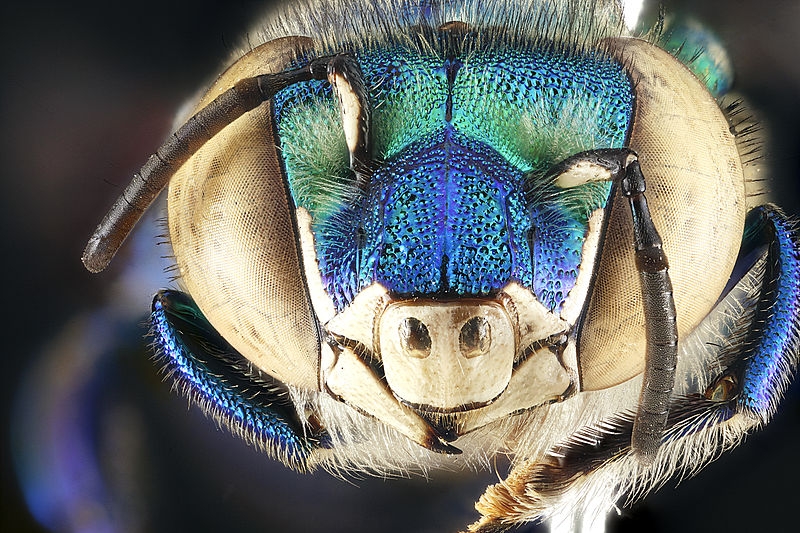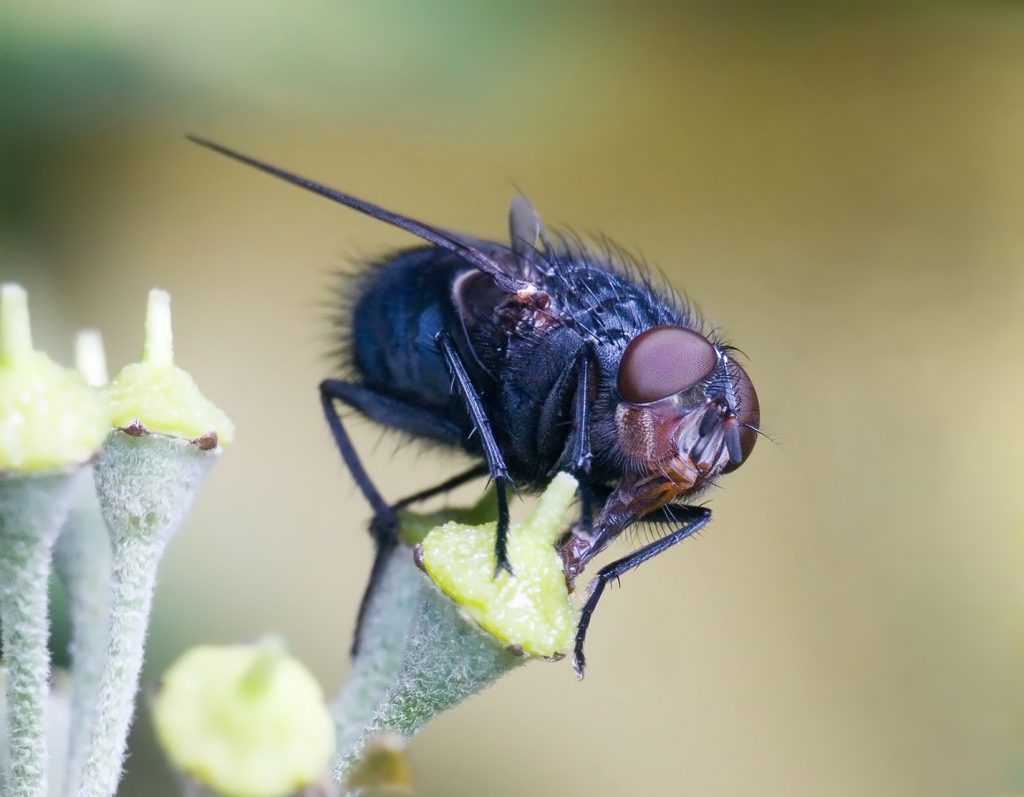We compiled a few of our favorite close-up photos of different bugs to show you the secret world that exists on a tiny scale. These amazing photos will forever change how you see small creatures…
Green orchid bee

This metallic-colored bee is native to Central America, but was recently introduced into Florida. Only the females have stingers.
Blue Bottle Fly

This is a common fly found around the world. They look a lot like your regular house-fly, except for their glossy blue color. The species loves feasting on decaying organic matter, and is known for pollinating h2-smelling flowers.
Here’s what one looks like from a different angle:

Thistle long-horned bee

These bees are named for the unusually long antennae that males of the species possess. They’re key pollinators for multi-million dollar crop industries.
Southern hawker dragonfly

This insect is one of the most common and widespread species of dragonfly in Europe. It can often be seen patrolling ponds and streams to feed on various insects.
Dragonfly (species unknown)

Dragonflies are often mistaken for damselflies. You can tell the difference by their wings: Dragonfly wings are held flat and away from the body, whereas damselfly wings are held above the abdomen folded at rest.
Jumping spider

There are over 5,000 species of jumping spider, making it the largest family of spiders! All jumping spiders have four pairs of eyes.
Virginia carpenter bee

This species is similar in size to the bumblebee, but has a black metallic body with a purple tint. There is no queen, but nest construction, foraging, and reproduction are all led by dominant females.




